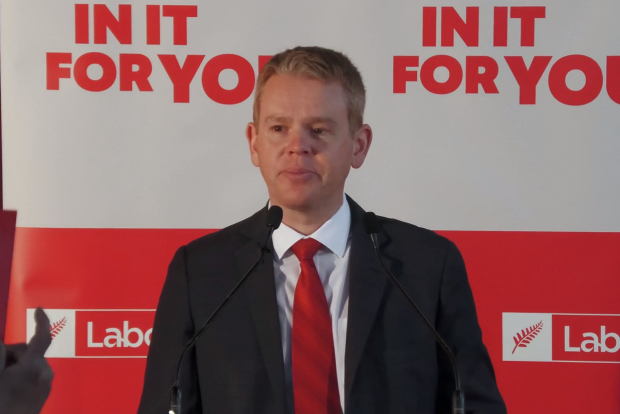New Zealand election battle lines drawn over public services

A series of announcements by the major political parties contesting for power at the next general election in New Zealand – scheduled for 14 October – have put public services in the campaign firing line.
In its latest financial statement, the governing Labour Party led by prime minister Chris Hipkins, has called for savings of up to NZ$4bn (US$2.4bn) over the next forecast period through to 2027. Meanwhile the opposition National Party, led by Chris Luxon, has also announced its intention to make similar cuts to government spending.
New Zealand public policy expert, professor Grant Duncan, told Global Government Forum that New Zealand is “still going through the shockwaves of COVID-19” which is leading to pressure to downsize public spending. “Even Labour are doing it, highlighting a need to cut costs,” he said.
Labour’s minister of finance, Grant Robertson, stated on 28 August that the government “is requiring public agencies to find permanent savings including through cutting back on contractors”. There will also be a reduction in future budget allowances, trimming of some programmes and taking back underspends by departments.
Robertson said that agencies are being required “to trim 1-2% off their existing baselines”. They have been directed to do this while protecting frontline services, and several agencies have been excluded from the cost savings measures to ensure this.
He added that the planned spending restraint would likely lead to a reduction in the size of the public service. The reduction in jobs is still to be decided, he said, and although “there isn’t a specific headcount target, there is a dollar target,” that would be worked on by chief executives and ministers. He said it “is not fair to say” that thousands of civil servants would lose their jobs as savings could come from not filling vacancies and fewer contractors.
Budget planning for the years ahead
Much of the baseline cost savings are to be achieved in future years. Budget allowances for 2025-26 have been reduced by NZ$250m (US$149m) with reductions of NZ$500m (US$298m) slated for 2026-27. The intention is to keep public debt below 30% of GDP.
The focus on contractors and consultants aims to reduce spending to pre-COVID levels. Ministry of Finance figures indicate that expenditure on contractors as a proportion of workforce spend was 13.4% in 2017-18, the year Labour entered office and had decreased to 10.4% by 2020-21. However, due to the pandemic, this had increased to 14.6% by 2021-22. Robertson has committed to getting this figure down to 11% and to achieve savings of NZ$165m ($98m).
Read more: Trust and teamwork: Hannah Cameron on how New Zealand dodged the COVID bullet
Meanwhile, the National Party has claimed that spending on contractors and consultants by Labour has increased by NZ$717m ($427m).
Duncan said that the Labour government “is prone to accusations of too much use of consultants and the big consulting firms”, and these attacks are always quite effective politically. “People are always easily convinced there is too much waste, too many bureaucrats, too much money spent on consulting firms,” he said.
Robertson took a swipe at the National Party, which is also calling for cuts in public spending but alongside additional tax cuts: “Uncosted, untargeted tax cuts like those promised by the opposition are simply not affordable. Likewise sweeping statements about slashing public services is also de-stabilising and disingenuous,” he said.
National’s ‘Back Pocket Boost’ policy agenda was released on 30 August. Its headline measures called for an average NZ$594m (US$354m) per year reduction in spending on back-office functions in government departments, excluding non-core and frontline agencies. It has also called for reductions in government spending on contractors to the tune of an average NZ$400m (US$238m) per year.

“The National Party document talks about cutting costs and numbers in the public services as one way of funding or balancing the books with their tax cuts,” Duncan said. “It is very clear from their statement that on day one ministers will look out for what they can cut, although you could argue Labour is doing that already with their intention to save NZ$4bn.”
The Back Pocket Boost document states that a savings drive would start immediately should the National Party take office after the election and that its aims would be to make “an average of 6.5%” of savings of 2023-24 forecasted departmental expenditure. This is equivalent to 2.2% of the baseline equivalent announced in Robertson’s financial statement, slightly higher than Labour’s call for 1-2%.
These will be implemented across identified agencies, particularly those that have seen high rates of expenditure growth in recent years, which will be asked to achieve higher levels of savings.
“Incoming ministers will instruct departmental chief executives to go line-by-line through existing expenditure to identify spending areas that are not critical to core frontline delivery,” the policy states.
It identified examples includes reducing advertising and public relations activities, and work programmes such as income insurance schemes, Fair Pay Agreements, Industry Transformation Plans, and Labour’s modified Resource Management Act housing regulations.
In terms of numbers, National will also reduce the civil service headcount by leaving vacancies empty, stopping new hiring, and retiring working groups and task forces. It will also stop office refurbishments and upgrades to property leases.
The agencies excluded from the savings rounds include the Ministry of Health, the Ministry of Education, the Education Review Office, the Department of Corrections and Oranga Tamariki (children’s ministry). The New Zealand Police, New Zealand Defence Force and crown entities such as NZ Transport Agency and Housing New Zealand/Kainga Ora are also exempt. This is despite frequent attacks on the latter agency in the media.
Listen to Global Government Forum’s Leading Questions podcast with Iain Rennie:
Under a National-led government, departmental-specific caps on spending on contractors would be introduced in 2024 with a quarterly reporting of expenditure. Restrictions will also be introduced on the use of contractors where there are full-time employees doing the same work.
Recent voter polls have given the National Party a large lead over the Labour government. However, under New Zealand’s proportional representation voting system it means that the main parties usually have to govern in a coalition with one or more of the minor parties. The ACT Party is most likely to ally with National to form the next government if current polling bears out.
The ACT Party’s ‘Effective and efficient public services’ policy published earlier in August criticises increases in public expenditure and calls for NZ$1bn (US$600m) of cuts “from day one”.
“ACT has gone full neoliberal,” Duncan said of the policy, “with Key Performance Indicators (KPIs) back again and more at-risk remuneration, particularly for chief executives. ACT are also saying that ministers should be able to set the KPIs for chief executives, assess their performances and grant the bonuses.”
It is through the re-introduction of measures like these used in the private sector that ACT wants to drive performance and address what it perceives as a lack of measurement and accountability in the delivery of services and a lack of ministerial power over public service chief executives and incentives for the latter to perform.
“That is putting the performance management of chief executives and the public service directly into the hands of ministers,” Duncan said. “That is a problem in terms of politicisation of this relationship based on rewards.”
ACT wants Treasury monitoring of productivity performance benchmarks based on outputs and outcomes that will include childcare, education and training; welfare benefits; immigration; health and aged care; and the courts. ACT states that the development of indicators would be the responsibility of the Treasury with the departments following the principles of “equity, effectiveness and efficiency”.
“I am not saying ACT will get their way if there is a change of government,” Duncan said, “but you can see the pressure nonetheless from the right, where both National and ACT are clearly targeting some kind of reduction certainly in the size of public sector organisations.”



















